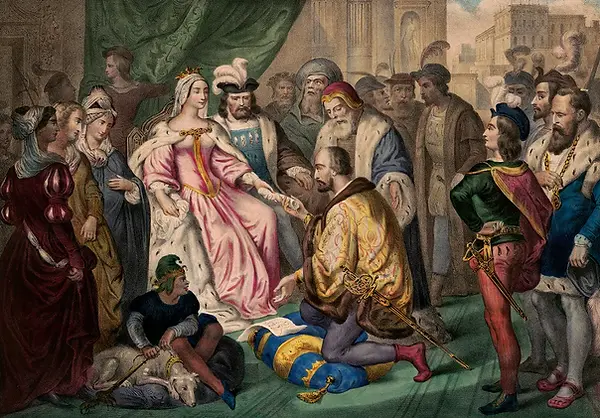Queen Isabelle I
https://www.britannica.com/biography/Isabella-I-queen-of-Spain
Isabella I, by name Isabella the Catholic, Spanish Isabel la Católica, (born April 22, 1451, Madrigal de las Altas Torres, Castile—died November 26, 1504, Medina del Campo, Spain), queen of Castile (1474–1504) and of Aragon (1479–1504), ruling the two kingdoms jointly from 1479 with her husband, Ferdinand II of Aragon (Ferdinand V of Castile). Their rule effected the permanent union of Spain and the beginning of an overseas empire in the New World, led by Christopher Columbus under Isabella’s sponsorship.

“Christopher Columbus in the Court of Isabella I”, colour lithograph, c. 1840s; in the Library of Congress, Washington, D.C.
Columbus visited her to enlist support for the voyage that was to result in the European settlement of America. Although the story of her offering to pledge her jewels to help finance the expedition cannot be accepted, and Columbus secured only limited financial support from her, Isabella and her councillors must receive credit for making the decision to approve the momentous voyage. The terms on which the expedition was to set out to discover a new route to the Indies were drawn up on April 17, 1492. The New World that was explored as a result of that decision was, with papal confirmation, annexed to the crown of Castile, in accordance with existing practice in regard to such previous Atlantic discoveries as the Canary Islands.
The queen and her advisers hardly needed Columbus to remind them of the opportunity now offered for the spreading of Christianity. Yet the unexpected discoveries quickly brought fresh problems to Isabella, not the least of which was the relationship between the newly discovered “Indians” and the crown of Castile. The queen and her councillors were more ready to recognize the rights of the Indians than was Columbus; she ordered some of those he had brought back as slaves to be released. The queen was still concerned with these problems when she died in 1504.